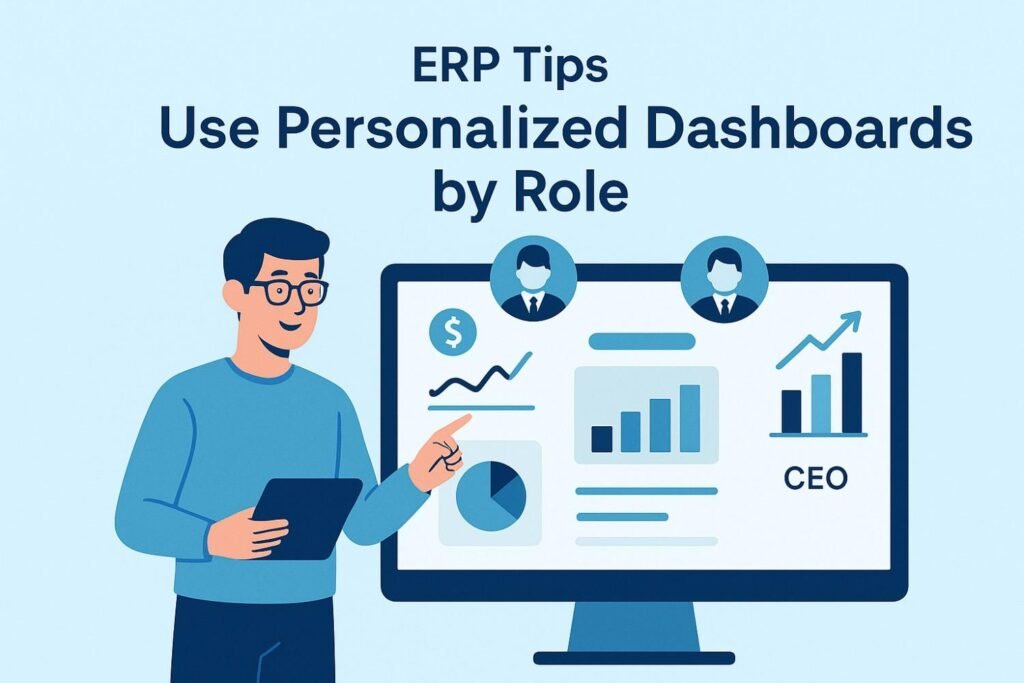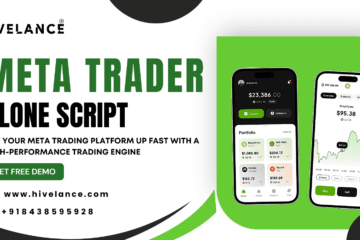If there’s one thing we’ve learned in years of building custom ERP systems, it’s that one-size-fits-all dashboards fit about as well as your old high school jeans. Sure, they technically “cover everything,” but try wearing them for an entire workday—and you’ll quickly realize you’re not breathing as freely as you thought.
At Kanhasoft, an ERP software development company that’s seen its fair share of dashboard disasters, we know that giving every user the same ERP homepage is like making every employee eat from the same office lunch menu. (Yes, Jim from Accounting loves tuna casserole. No, that doesn’t mean the warehouse team wants it too.)
That’s where personalized dashboards by role step in—not as a luxury, but as the sanity-saving, productivity-boosting, “how did we ever live without this?” feature your ERP needs.
Why “Personalized by Role” Beats the Default Any Day
Let’s start with a truth bomb: most ERP users don’t care about all the data. They care about the right data.
-
A Sales Manager wants to see monthly targets, pipeline status, and that one client who always “forgets” their payment date.
-
An Inventory Supervisor needs stock levels, reorder alerts, and maybe a widget that tells them which supplier will ghost them next.
-
A CEO? They want high-level KPIs, revenue growth, and perhaps a discreet reminder that Friday’s golf game is not a strategy meeting.
When everyone sees the exact same dashboard, two things happen:
-
Users waste time digging for their specific info.
-
Critical insights get lost in a sea of irrelevant widgets.
Personalized dashboards by role act like a GPS for each user—straight to what matters, no detours through “Why am I even seeing this?” territory.
How We Learned This the Hard Way
Years ago, we worked with a mid-sized manufacturing client. Their ERP homepage looked like a NASA mission control panel—every department’s data crammed into one dashboard. It was “comprehensive,” yes. But here’s the thing: comprehensive is great for encyclopedias, not for Monday morning at 9:05 a.m. when your coffee hasn’t kicked in yet.
After our first week on the project, the CFO politely mentioned they’d stopped looking at the ERP dashboard entirely because “it just makes my brain tired.” Ouch.
We redesigned the system so each role had its own homepage. Two months later, user adoption skyrocketed, decision-making improved, and the CFO stopped avoiding eye contact in meetings.
Key Benefits of Role-Based ERP Dashboards
Let’s put some structure on this—because even in Kanhasoft whimsical storytelling world, lists make the internet happy.
1. Faster Decision-Making
When the first thing users see is exactly what they need, decision latency drops. No more endless clicks to find the latest stock report.
2. Reduced Training Time
A personalized dashboard makes ERP less intimidating for new hires. They start with tools relevant to their job, not 47 unrelated buttons they’ll never touch.
3. Better User Engagement
Users log in more often and actually use the system—because it feels like their tool, not a generic corporate obligation.
4. Lower Cognitive Load
ERP systems can be complex beasts. Showing only what’s necessary reduces mental clutter and keeps people from zoning out (or worse, resorting to shadow spreadsheets).
5. Security & Compliance Benefits
By default, dashboards can limit access to sensitive info based on role, reducing the chance of “accidental” data leaks.
Designing Role-Based Dashboards That Actually Work
This is where the craft comes in. An ERP software development company like ours doesn’t just shuffle widgets around—we think about workflows, decision points, and how data supports real-world tasks.
Here’s our golden rule:
“If a dashboard item doesn’t help the user decide or act, it’s just decoration.”
A few practical tips:
-
Interview Real Users – Yes, actual conversations. “What’s the first thing you look for when you log in?” will tell you more than any technical spec sheet.
-
Keep It Minimal – If everything’s important, nothing is.
-
Use Visual Hierarchy – Place critical KPIs top-left, where the eye naturally starts.
-
Make It Configurable – Even within the same role, preferences differ. Give users some drag-and-drop freedom.
The Secret Ingredient: Continuous Feedback
We love to imagine ERP dashboards as “set and forget” features—but the truth? They’re more like a sourdough starter. You have to check in, adjust, and occasionally throw out things that no longer work.
We’ve seen clients launch with a brilliant dashboard setup, only to discover six months later that their sales team stopped using the “Hot Leads” widget because marketing redefined what “hot” means. (Apparently, “hot” now includes leads who haven’t opened an email in two years. Sure.)
Regular check-ins with users ensure dashboards evolve alongside business needs.
When Personalization Goes Too Far
Quick cautionary tale: one client got a little too excited about customization. They created hyper-personalized dashboards—not just by role, but by individual personality type.
The result? One poor sales rep had a dashboard so tailored to their preferences, it displayed only their favorite client account and an inspirational quote. Lovely for morale, terrible for sales targets.
Personalization should empower users, not trap them in a data echo chamber.
Why Your ERP Software Development Company Matters Here
You could try to cobble together role-based dashboards on your own, but here’s the catch: true personalization requires not just front-end design sense, but deep understanding of your ERP’s data architecture.
An experienced ERP software development company (hi, that’s us) brings:
-
Technical know-how to pull the right data without slowing the system.
-
UX expertise to ensure dashboards are intuitive.
-
Integration skills to make widgets play nicely with other systems.
In short: we don’t just make dashboards look pretty—we make them work like they’ve been reading your users’ minds (but in a totally non-creepy way).
Final Thought
At the end of the day, an ERP dashboard is the user’s home base. If it’s cluttered, irrelevant, or confusing, it’s like living in a house where the kitchen is in the attic—you can make it work, but you’ll resent it every time you need coffee.
Role-based personalization turns that house into a well-organized, intuitive space where everything is exactly where you expect it. And in business, that means less time searching, more time doing, and maybe—just maybe—a CFO who smiles when you talk about ERP.
FAQs
Q1: What is a role-based ERP dashboard?
A role-based ERP dashboard is a customized interface showing only the most relevant data and tools for a user’s specific role, improving efficiency and reducing clutter.
Q2: How do personalized dashboards improve productivity?
By surfacing the most relevant metrics and tasks upfront, users make decisions faster and avoid wasting time searching through irrelevant data.
Q3: Can I still let users customize their dashboards individually?
Yes—many systems allow individual tweaks within a role-based template. This strikes a balance between standardization and personal preference.
Q4: How often should dashboards be reviewed?
We recommend reviewing every 3–6 months to ensure widgets, metrics, and workflows still align with business goals.
Q5: Why work with an ERP software development company for this?
Because role-based dashboards require both technical integration skills and UX design expertise—something experienced ERP software development companies excel at.





